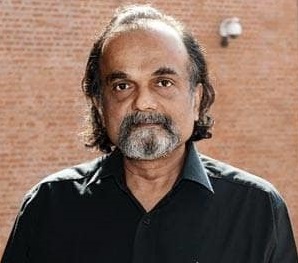With PC back again there is widespread hope that the economy can revive. But perhaps much more important is his view that interest rates can now come down. I and several others have been arguing that the monetary conservatism exhibited by the central bank has been one of the reasons for the performance of the economy below its potential in recent times. It is important to understand why the Indian economy grew very rapidly from 2003-04 to 2007-08: One of the important reasons was that money supply growth was at high levels of 17% or so since the RBI quite against what it wanted to do, could not fully sterilize the inflows of capital with domestic credit turning negative. The only recourse to was to raise CRR which the RBI did nearly continually in over 2007-08, and allowed the rupee to appreciate by not accommodating the pressure for flows, so that growth in the economy had already slowed down before the global financial crisis. The mismanagement of the monetary system by the RBI during the financial crisis was remarkable. By not accommodating sufficiently the dollar outflows, and much more seriously by not expanding domestic credit sufficiently after the Lehman Brothers collapse, and allowing therefor reserve money to collapse an unnecessary rupee liquidity crisis was imposed upon the economy. With much delay the RBI expanded domestic credit to expand liquidity, but that came too late –resulting in a collapse of the stock market, and bringing investments down. Many corporates with very high cost money brought in by promoters kept up the pace of investments in areas like power where they were contractually bound to implementation schedules. The new government’s fiscal stimulus was what saved the day so that quarterly growth after it had fallen to less than 4% revived to reach levels upward of 8% over the next two years and quarter. The RBI’s stance of hitting the demand side for a supply inflation on food and fuel, which had begun even as early as 2006-07 has continued. This is a futile and hurtful stance, since it could not have (and has not) brought inflation down. Stagflation today is almost entirely due to the RBI’s actions. The governance crisis over the last half year has compounded the problem, but even if that improves with PC in the seat now, there is going to be no revival unless rates come down. What is most hawkish about the central bank is that since early 2010, the yield on one year government bonds have become well above the repo rates – in other words not only are the rates high, but there was an imposed liquidity shortage! It is only now with the reductions in CRR and SLR over the last several months that the liquidity shortage has been overcome. And all this for nothing. Models and analyses have repeatedly shown that inflation was due entirely to food and fuels, and there was no expectations effect since the inflation in non-primary mfg which is low has moved with the food inflation and has come down as food inflation fell. So all that the RBI ended up doing is bringing mfg output growth to below 4% and the rate of growth of capital formation to below 3% and the share to less than 30% from the high level it had reached of 36+ %.
Its robot like stance that inflation today must be acted upon by way of monetary tightening is based on a lack of understanding of the working of emerging economies like India and China. Rise in inflation in the standard model happens when the demand determined level of output exceeds the capacity to produce. The, (called full employment level of output in the standard model) has to be more correctly understood as the capital stock alone in emerging economies, since there is no shortage of labour due interalia to rising productivity and the existence of disguised unemployment. This is unlike what is true of the developed economies where the capacity to produce is jointly constrained by capital stock and labour(employment) as well. Indeed, brakes on demand by reducing the investment rate is inflationary in the medium term. The RBI has always underestimated growth in periods of high growth and over estimated the same in periods of declining growth. So much for its multi-indicator approach which has only served to obfuscate.
Tackling food inflation is not going to be easy. The incomes of the bottommost –thanks to the NREGs – has risen. The demand of the bottom deciles for grain keeps inflation high in the face of not too rapid an increase in agriculture. More importantly the other deciles going up to the seventh decile of the NSS have shown a rapid increase in the consumption of value agricultural products viz vegetables, fruits, meats and fish which is only to be expected given the transformation of the economy where finally the poor are beginning to gain. China saw the same phenomena, in the mid eighties, but not that of grain inflation since the there was no hunger before their reform in 1979. There is no way the incomes of the poor would rise without a price rise- the historical shift in the terms of trade in favour of agriculture is on. Surely if demand side has to work here than the only way it can do so would be to reduce the incomes of the poor and the lower middle class to such low levels that they would reduce their demand for food! Which is absurd! The current stance only hurts demand in sectors where there is ample capacity –viz mfg – to reduce growth in mfg and associated services.
If PC has to get to get the economy going the first step would be to convince the RBI to let go its hawkish stand. The high fiscal deficit is also no argument for tightening either, since in a country like India the fiscal deficit can (and this is the only way it has) come down through the denominator side of high GDP. The very large elasticity of both CENVAT and service tax with GDP growth in the non-primary sector should see the fiscal deficit come down even if the central government did a mere holding out operation on “wasteful expenditures” like subsidies and some of the social sector expenditures. Agriculture reform (abolition of APMC Act, free movement of agricultural produce), vastly increased buffer stocking (from the current thinking that a mere 20-30 m tonnes is optimal), and hence reform of the FCI and the institution of either a universal PDS, or a direct subsidy to the poor, are the need of the hour. Today it is only the large (unintended) stocks which will save the day for India as it did c. 2003 when a shortfall was made good with release from the vast buffer stocks then. The free trade agenda with regard to agriculture is patently absurd if one has even a rudimentary understanding of global grain markets and their monopolization. Most importantly PC needs to come out with an investment tax credit (ITC) that allows nearly 60% additional tax credit on investments since the need of the hour is to revive private investments. That would give the breathing space since the FDI and FII investments that would follow to give the economy a small boost to the reserves taking it out of the danger zone. In the long run of course the rupee must adjust to a lower value since the scope for India to live with a current a/c deficit of more than 2% is over. Similarly direct endowment subsidies in electricity, kerosene, and fertilizer are due. Here the fight is with the entrenched and uncreative bureaucracies which continue to resist good solutions in endowment subsidies to let the status-quo continue with costs of delivering one rupee of subsidy to the poor and targeted which are as high as 6:1 (food); 12:1 (kerosene); electricity (4:1) and fertilizer (1.4:1). Without these measures, and if the central bank continues to sell dollars to prop up the rupee in a non-growth situation, we should see a further fall in growth (to about 4.5%) and possible even a sharp downward correction of the rupee, and stagflation for many more years to come.


